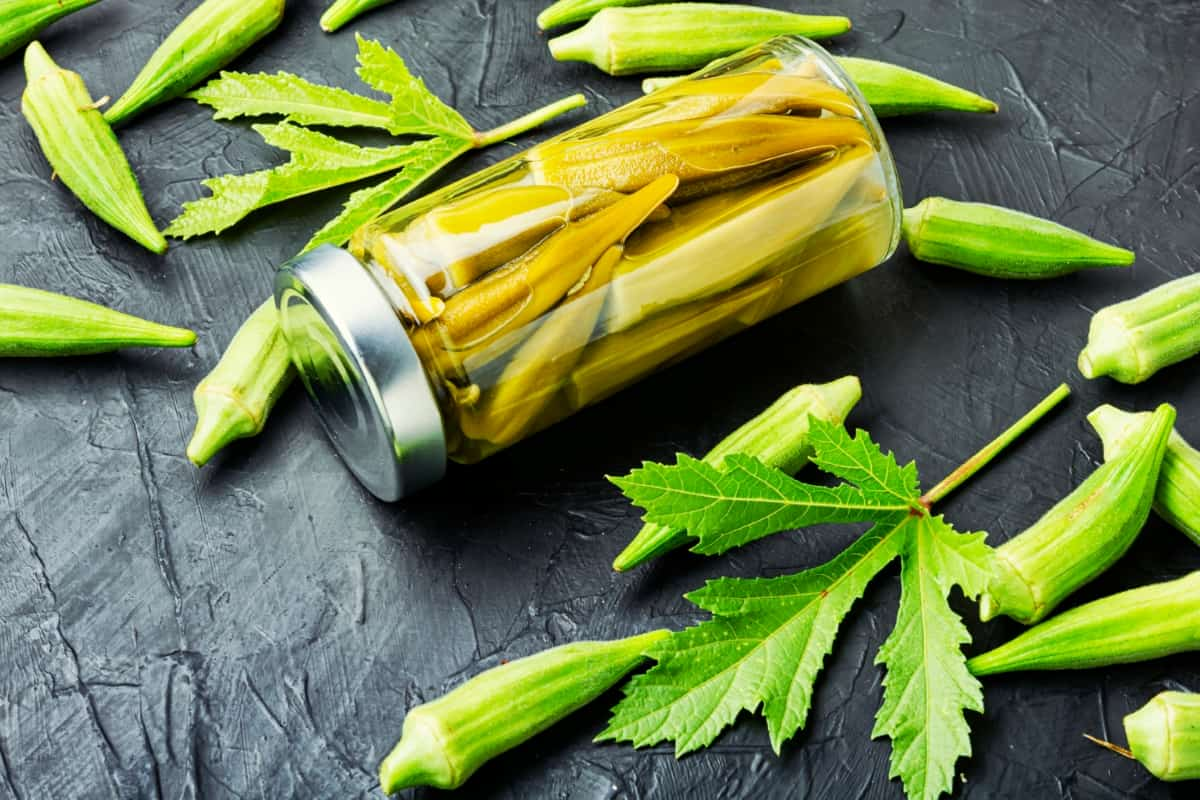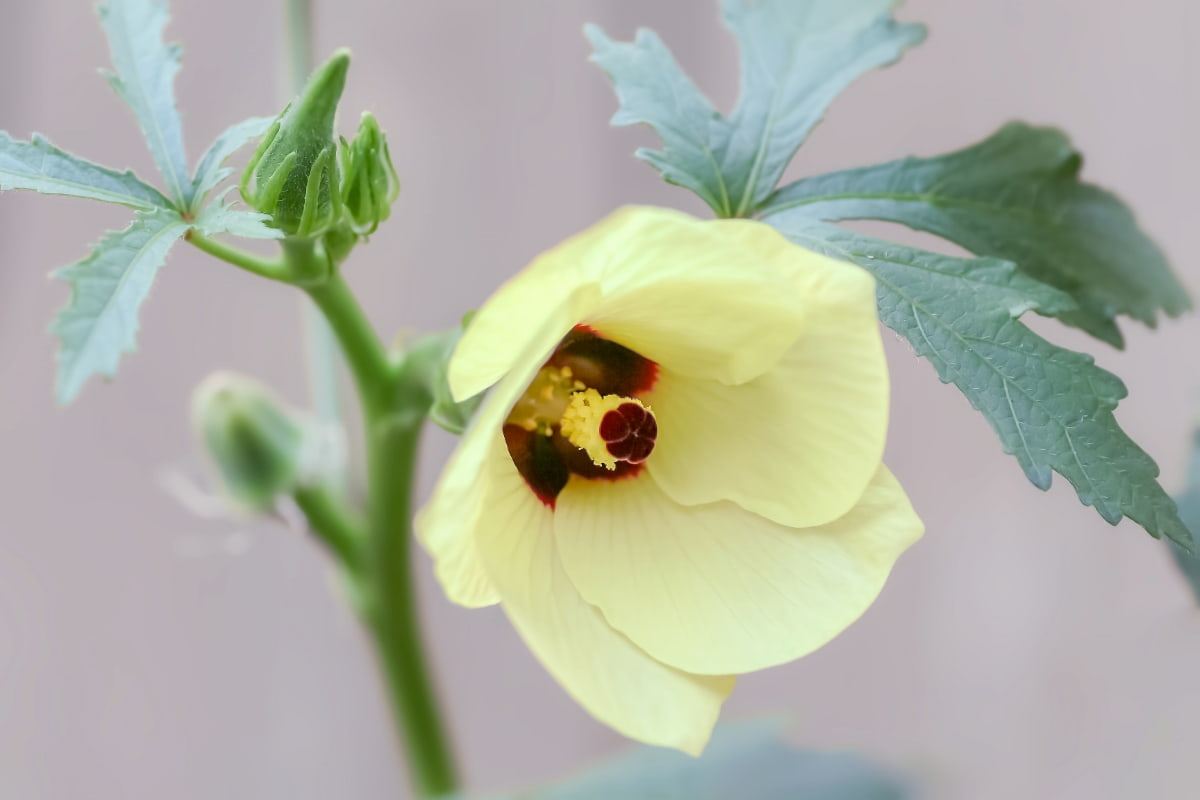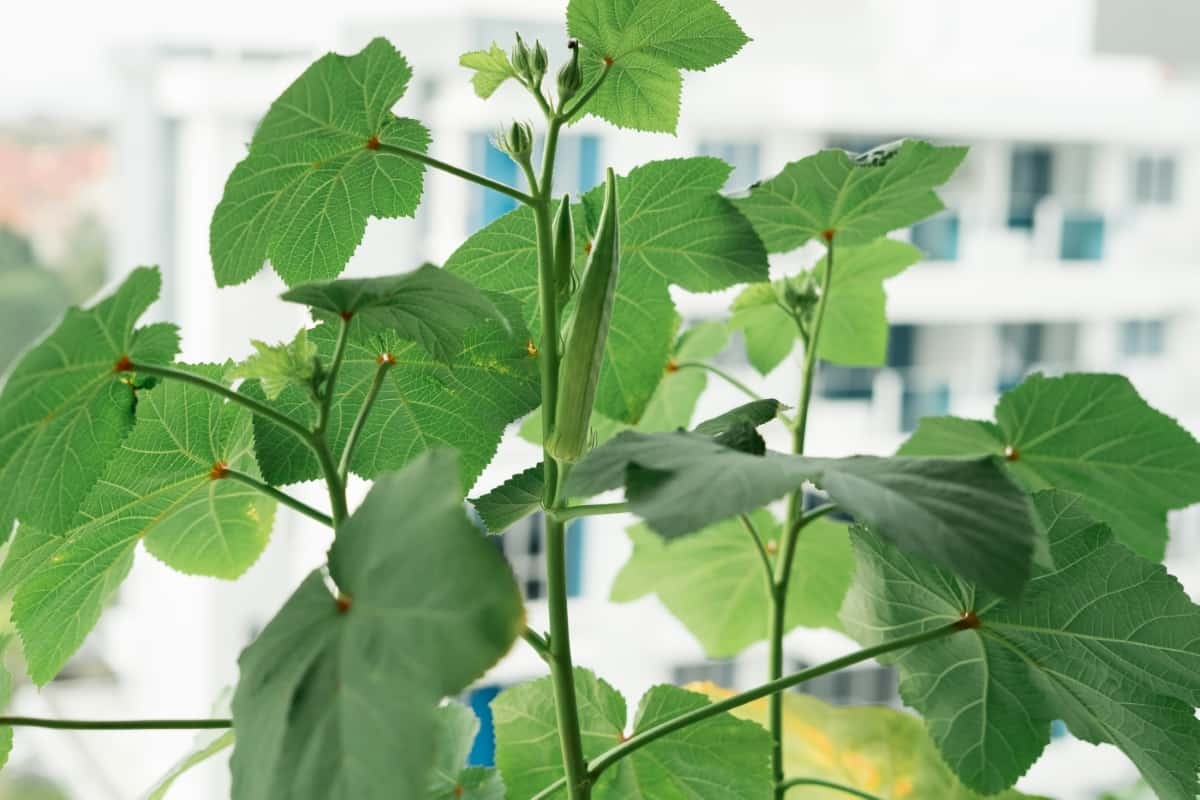Fusarium Wilt disease, caused by the Fusarium oxysporum pathogen, can severely affect the health and productivity of Okra plants. It spreads through infected soil or plant debris, making it challenging to control. This fungal disease can wreak havoc on your Okra plants, causing stunted growth and wilting leaves.

The benefit of treating Okra Fusarium Wilt naturally is promoting overall plant health. By utilizing natural fungicides, such as neem oil or biological control methods, we can target the specific fungus causing the Wilt while preserving beneficial microorganisms in the soil.
How to Control Okra Fusarium Wilt Naturally
How to Get Rid of Okra Fusarium Wilt with Natural Fungicides
Fusarium wilt is a common problem faced by Okra growers, but there are natural solutions available that can help control this disease. Neem oil has been found to have antifungal properties and can be effective in controlling Fusarium wilt. Dilute the neem oil according to package instructions and regularly spray it on your Okra plants. This will make a protective barrier against the fungus and help prevent its spread.
Garlic contains antimicrobial compounds, making it an excellent choice for combating fungal diseases like Fusarium wilt. To make a garlic spray, crush several garlic cloves and mix them with water. Allow this mixture to sit overnight before straining out the solids and spraying it onto your affected plants. Maintaining healthy soil is crucial for any garden pest or disease issue.
Using Neem Oil to Control Okra Fusarium Wilt
Neem oil is a natural treatment that effectively controls Okra Fusarium Wilt. Applying neem oil to your Okra plants can help prevent and manage this devastating disease. To use neem oil as a fungicide, dilute it according to the instructions on the label and spray it onto your Okra plants. Make sure to cover both sides of the leaves thoroughly. Repeat this application every 7-14 days or as needed, especially during periods of high humidity or when symptoms of Fusarium wilt are present.
The Benefits of Companion Planting for Okra Fusarium Wilt Control
Marigolds – Marigolds release chemical compounds into the soil that repel nematodes, contributing to the spread of Fusarium wilt. Additionally, marigolds attract beneficial insects that feed on pests such as aphids and caterpillars.
Basil – The strong aroma of basil deters pests like thrips and mites while attracting pollinators like bees. This helps improve overall plant health and resilience against diseases.
Beans or Peas – Intercropping with beans or peas can provide shade for young Okra plants during the hot summer. This not only reduces stress on the plants but also creates a favorable microclimate that discourages fungal growth.
Okra Fusarium Wilt Control with Crop Rotation
Crop rotation is an important technique for controlling Okra Fusarium Wilt naturally. By rotating the crops in your garden, you can disrupt the life cycle of the fungus that causes this devastating disease. The principle behind crop rotation is simple: don’t plant Okra or other susceptible plants in the same spot year after year.
In case you missed it: How to Control Okra Leaf Spot Naturally: How to Get Rid of This with Natural and Organic Treatment

Rotating Okra with non-susceptible crops such as legumes or leafy greens can help break the disease cycle. In addition to disrupting fungal growth, crop rotation offers other benefits, like improving soil fertility and reducing pest populations. So not only are you protecting your Okra from Fusarium wilt, but you’re also promoting overall garden health.
The Role of Soil Health in Okra Fusarium Wilt Control
Firstly, ensuring proper drainage is essential, and excess moisture can make an ideal environment for the growth of Fusarium fungi, which causes Wilt in Okra plants. You can minimize the infection risk by improving soil structure and implementing effective drainage systems. Furthermore, enriching the soil with organic matter can enhance its health and fertility.
Adding compost or well-rotted manure increases beneficial microbial activity in the soil, promoting a balanced ecosystem that helps suppress fungal pathogens. Maintaining proper pH levels is another important aspect of managing Okra Fusarium Wilt naturally. Aim for a slightly acidic pH range between 6 and 6.5, discouraging fungal growth while supporting healthy plant development.
Okra Fusarium Wilt Control with Resistant Varieties
When selecting resistant varieties, choosing ones specifically bred for your region and climate is important. This ensures they thrive in your conditions and provide optimal resistance against Fusarium wilt. Resistant varieties work by having genetic traits that make them more resilient against the fungus causing the disease. By planting these varieties, you can significantly reduce the risk of your Okra plants becoming infected and suffering from Fusarium wilt.
The Benefits of Mulching for Okra Fusarium Wilt Control
Mulching is not only a great way to suppress weeds, but it can also play a significant role in controlling Okra Fusarium Wilt naturally. Applying organic mulch around your Okra plants creates an insulating barrier that helps regulate soil temperature and moisture levels. The benefit of mulching is its ability to prevent soil splashing, which can spread fungal diseases like Fusarium Wilt.
When selecting a mulch for controlling Okra Fusarium Wilt naturally, choose organic materials such as straw, grass clippings, leaves, or compost. Apply a 2–3-inch layer around your Okra plants while avoiding direct contact with stems to prevent rotting.
Okra Fusarium Wilt Control with Biological Control Methods
The main way to implement biological control is by introducing beneficial microorganisms into the soil. These microbes help suppress the growth of Fusarium wilt-causing fungi, creating a healthier environment for your Okra plants. You can find these beneficial microorganisms in products like compost teas or microbial inoculants.
In case you missed it: How to Control Okra Bacterial Wilt Naturally: How to Get Rid of This with Natural and Organic Treatment

Another method is to use predatory insects that feed on pests that spread Fusarium wilt. Ladybugs and lacewings are natural predators of sap-sucking insects that can transmit diseases. Attracting or releasing these beneficial insects into your garden can reduce pest populations and minimize the risk of spreading Okra Fusarium wilt.
The Importance of Proper Watering for Okra Fusarium Wilt Control
This disease thrives in overly moist conditions, so maintaining the right moisture in the soil is essential. The important tip for watering your Okra plants is to do it deeply and infrequently. This encourages the development of deep roots, which can help the plants access water more efficiently and reduce their susceptibility to Wilt. It’s also important to avoid overhead watering, as this can affect excess moisture on the leaves and increase the risk of fungal infections. Instead, consider using a drip irrigation system or watering at ground level.
Okra Fusarium Wilt Control with Integrated Pest Management
The key aspect of IPM for Okra Fusarium Wilt control is monitoring and early detection. Regularly inspect your plants for signs of Wilt, such as yellowing leaves or wilting stems. By catching the problem early on, you have a better chance of successfully managing it. Proper sanitation is essential in preventing the spread of Fusarium fungus. Remove and destroy infected plants and any nearby debris or weeds that may harbor the disease.
Frequently Asked Questions about Control Okra Fusarium Wilt
What is the Best Way to Control Okra Fusarium Wilt Naturally?
Organic and natural fungicides are the best way to control Okra Fusarium Wilt naturally. Neem oil, for example, has antifungal properties that can help combat this disease.
How Does Fusarium Wilt Affect Okra?
Fusarium wilt can have devastating effects on your Okra plants. As the fungus infects the root system, it restricts water uptake and nutrient absorption in the plant. This leads to wilting, stunted growth, and decreased yield. If left untreated, entire crops can be lost to this disease.
How Do I Know If My Okra Has Fusarium Wilt?
There are several signs to look out for when determining if your Okra has been infected with Fusarium wilt. Wilting or drooping leaves that turn yellow or brown are a clear indicator of this disease. You may also notice dark streaks on the stems of affected plants.
In case you missed it: How to Control Okra Fungal Diseases Naturally: How to Get Rid of Them with Natural and Organic Treatment

Conclusion
Fusarium Wilt is a fungal disease in Okra that attacks the plant roots, causing them to wilt and eventually die. It is a common problem for Okra plants, especially in warm and humid climates. The benefit of using natural treatments for Okra Fusarium Wilt is that they are safe for the environment and your health. Natural remedies for controlling Okra Fusarium Wilt can be made at home easily using basic ingredients like garlic or baking soda.
- Deworming Schedule for Dogs/Puppies: A Beginners Guide
- How to Prevent and Control Parasites in Goats
- Beneficial Insects in Pest Management
- Natural Solutions for Pest Control in Flower Gardens
- Types of Fungicides Used in Agriculture
- Common Issues in the Fruit Development Stage of Pomegranate Farming
- Fruit Development Issues in Papaya: Easy Solutions and Treatment
- Soil-Borne Diseases and How to Protect Your Plants
- Practices to Prevent Disease Spread in the Garden